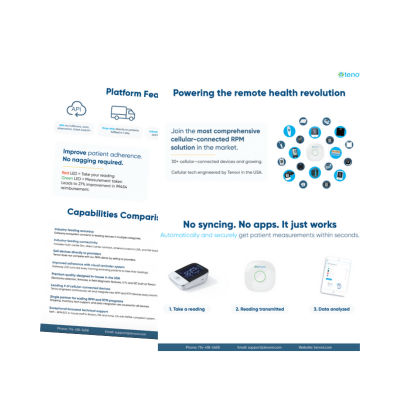Maintaining health during the colder months requires intentional daily habits, which is why focusing on healthy tips for winter is important for individuals and for care teams supporting patients at home. Seasonal changes bring increased respiratory illness, lower humidity, reduced sunlight, and shifts in physical activity. Evidence from national public-health and clinical organizations shows that prevention, early symptom recognition, and consistent routines can reduce winter-related health risks for those with chronic conditions.
Healthy Tips for Winter: Support a Stable Daily Routine
A consistent routine helps counter many winter-related disruptions. Shorter days, colder temperatures, and reduced outdoor activity can affect sleep, mobility, and overall energy. The National Institute on Aging outlines the benefits of daily physical activity in maintaining cardiovascular health, stability, and mood regulation throughout the year.
Implementing structured sleep and activity schedules helps patients and caregivers more easily identify changes in health status. A consistent routine encourages adherence to recommended daily measurements when using remote health tools.
Maintain Healthy Indoor Air Quality
It may be surprising but one of the important healthy tips for winter is keeping indoor air quality balanced. Indoor air becomes significantly drier during the winter. This can aggravate respiratory conditions, trigger coughing, and worsen sinus irritation. The U.S. Environmental Protection Agency provides guidance on indoor air quality management and the role of humidity in respiratory comfort.
When used correctly, humidifiers may support airway comfort and reduce dryness. Proper indoor conditions also help maintain the accuracy and stability of home-based monitoring devices such as blood pressure monitors, pulse oximeters, and thermometers.
Healthy Tips for Winter Nutrition
Immune function depends on consistent nutrition. Harvard Health places an emphasis on the role of micronutrients, including vitamins C, D, and zinc, in supporting immune response. Because sunlight exposure decreases in winter, many adults experience lower vitamin D levels. The National Institutes of Health provides evidence-based guidance on vitamin D intake, safety, and deficiency and the recommended amount of vitamin D by age.
Vitamin D: Recommended Daily Amounts
Life Stage: Recommended Amount
Birth to 12 months: 10 mcg (400 IU)
Children 1–13 years: 15 mcg (600 IU)
Teens 14–18 years: 15 mcg (600 IU)
Adults 19–70 years: 15 mcg (600 IU)
Adults 71 years and older: 20 mcg (800 IU)
Pregnant and breastfeeding teens and women: 15 mcg (600 IU)
Healthy Tips for Winter Hydration
Water makes up about 60-70% of the body and is essential to how well bodily systems regulate everyday functions. Hydration also declines during cold weather, making hydration one of the important healthy tips for winter. People often drink less water in winter because they underestimate their fluid needs Dehydration can influence blood pressure, heart rate, energy level, and general well-being, all of which can help track routine remote biometric readings.
How much water do you need? Daily fluid needs can vary based on several factors, including age, sex, activity level, and general health status. Those who are pregnant or breastfeeding typically require additional fluids. People managing certain medical chronic conditions, such as heart failure, kidney disease, and others with significant infections, or episodes of diarrhea, may have different hydration requirements.
Healthy Tips for Winter Water Intake
• Pay attention to thirst cues. When you feel thirsty, drink water—especially if you’ve been exercising or spending time in warm environments.
• Choose water first. Reach for water instead of sugary drinks, sodas, or energy beverages.
• Sip consistently. Drink water with meals and continue hydrating between them to keep intake steady throughout the day.
• Keep a reusable bottle with you. Having water available makes it easier to take small, frequent sips.
• Add natural flavor. Enhance the taste with lemon, lime, cucumber slices, or fresh herbs if you prefer something more interesting than plain water.
Foods With High Water Content
Foods with roughly 90%–100% water content:
• Hydrating beverages, including plain water, sparkling water, and fat-free milk
• Water-rich fruits such as cantaloupe, strawberries, and watermelon
• Vegetables like lettuce, cabbage, celery, spinach, and cooked squash
Foods with roughly 70%–89% water content:
• Fruits such as bananas, grapes, oranges, pears, and pineapple
• Vegetables including carrots, broccoli, and avocados
• Dairy items like yogurt, cottage cheese, and ricotta cheese
Prioritize Regular Movement & Monitor Mental Health
Physical activity typically decreases in winter due to weather and reduced daylight. This decline can affect blood pressure, glucose trends, mobility, and mood. The American Heart Association reinforces the importance of maintaining moderate activity throughout the winter months, even with indoor exercises. Simple indoor options include stretching, strength exercises, guided routines, or brief walking sessions. Such activities can help preserve cardiovascular and musculoskeletal health.
Reduced daylight and prolonged indoor time may affect mood. The National Institute of Mental Health provides evidence and guidance on Seasonal Affective Disorder (SAD), including symptoms and treatment approaches such as routine, light exposure, and follow-up with healthcare providers. Supporting mental well-being is a critical component of whole-person health during the winter season.
Stay Connected With Your Care Team
One of the most important healthy tips for winter is maintaining communication with healthcare providers to track if symptoms begin to change. There are increased risks associated with colder weather, including respiratory disease and worsening chronic conditions. Remote health tools make early communication and symptom reporting more accessible. Daily tracking of certain biometric measurements can help care teams to intervene promptly when measurements change or symptoms shift. Regular check-ins help prevent complications and support safer care at home.
Understanding Healthy Tips forWinter
Applying evidence-based healthy tips for winter supports better outcomes during colder months. Stable routines, balanced nutrition, hydration, indoor air management, regular movement, mental-health awareness, and ongoing communication with care teams form the foundation of winter wellness. For individuals using remote health technologies, these steps also reinforce adherence and help clinicians identify meaningful changes in health throughout the season.


